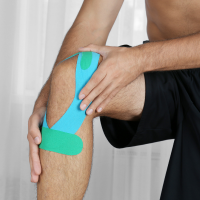How to Build a Post-Run Recovery Routine
You’ve crossed the finish line, your heart’s still pounding, and the runner’s high is in full swing—congrats! But before you kick back completely, don’t forget that recovery is just as important as the run itself. Whether you’re training for the Spurs Austin International Half Marathon or logging weekend miles, having a solid post-run recovery routine helps your body rebuild, prevent injury, and come back stronger for your next run.
Here’s how to recover the right way:
 1. Cool Down Properly
1. Cool Down Properly
Don’t stop suddenly after your run. Ease your body out of workout mode with a 5–10 minute walk or light jog. This gradual cooldown helps your heart rate return to normal and prevents stiffness or dizziness.
 2. Stretch It Out
2. Stretch It Out
Dynamic stretching before your run is key, but static stretching afterward helps improve flexibility and reduce soreness. Focus on the major running muscles—hamstrings, quads, calves, glutes, and hips. Hold each stretch for at least 20–30 seconds and breathe deeply.
 3. Grab a Foam Roller
3. Grab a Foam Roller
Foam rolling can be your best friend for recovery. It helps release tightness, break up muscle knots, and boost blood flow. Spend extra time on sore spots, but roll slowly and gently—this isn’t about pain, it’s about loosening up your muscles.
 4. Rehydrate and Refuel
4. Rehydrate and Refuel
After sweating it out, your body needs fluids and electrolytes to bounce back. Drink water or a recovery drink, and aim to refuel within 30–60 minutes of your run. Go for a balanced mix of carbs and protein—think smoothies, yogurt with fruit, or eggs and whole-grain toast—to help replenish glycogen stores and repair muscles.
 5. Rest and Sleep
5. Rest and Sleep
Muscle recovery happens when you rest. Don’t underestimate the power of a good night’s sleep—it’s when your body repairs tissue and strengthens muscles. On rest days, try light activity like walking or yoga to keep blood flowing without overloading your body.
 6. Listen to Your Body
6. Listen to Your Body
Every runner is different. If you’re feeling unusually sore or fatigued, give yourself an extra day to recover. Taking care of small aches now can prevent bigger injuries later.
Building a consistent post-run recovery routine will not only help you feel better after each run but also set you up for stronger, faster, and more enjoyable miles. Treat recovery as part of your training plan—it’s what keeps you moving forward mile after mile.
Get ready to put these recovery tips into practice when you cross the finish line at the Spurs Austin International Half Marathon this January!


